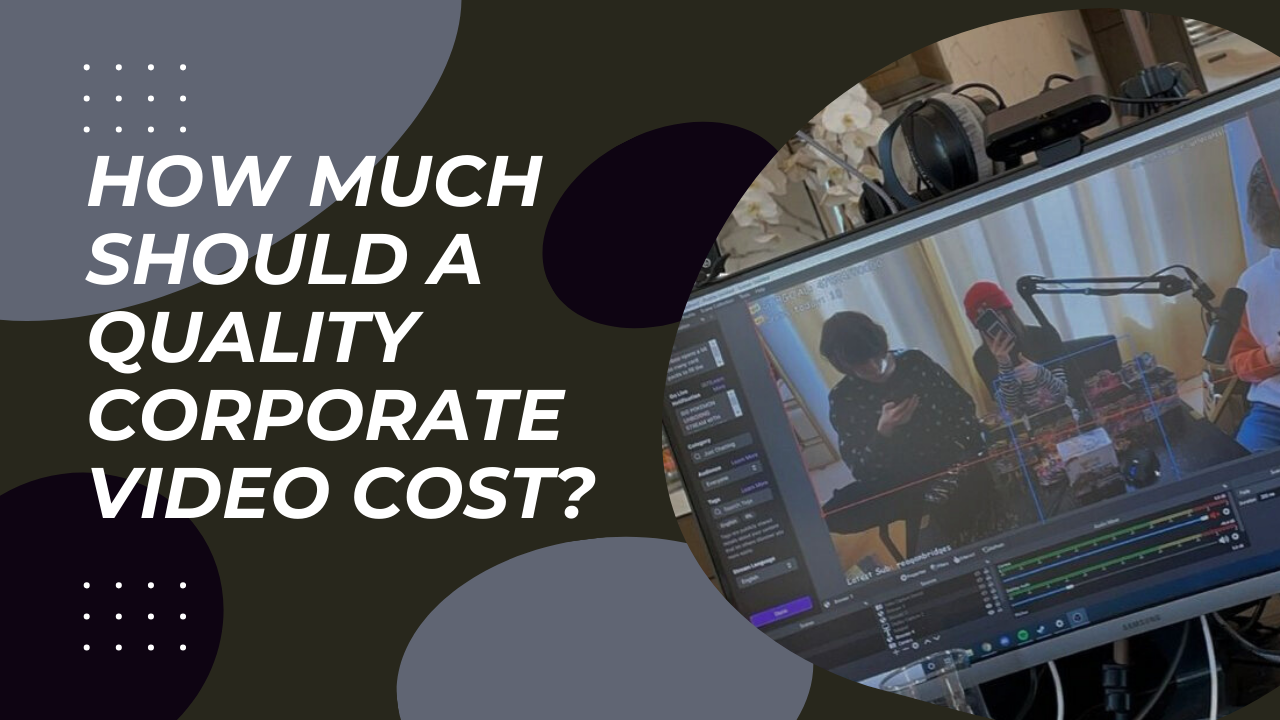Businesses utilise corporate videos for a variety of reasons and to appeal to various types of viewers. The most frequent use is to establish the company's brand, but there are many other applications as well, including showcasing events (including live streaming), staff profiles, presenting or communicating new products and services, customer reviews, educating staff on business operations and safety, and investor/shareholder presentations.
The Benefits of Corporate Videos
It is said that 60,000 words can be presented in one minute of video. Search engines like Google can index corporate films to boost a website's SEO rating, traffic, and ultimately sales. Corporate videos can go viral if they are funny or interesting, and sharing them is simple.
Keeping viewers captivated and delighted is crucial for business films to be watched and remembered because attention spans are getting shorter as a result of the daily onslaught of information. This calls for exceptional talent across a variety of disciplines, including concept creation, storyboarding, and all facets of production, shooting, and editing. The challenge of reaching potential viewers follows.
Making a Corporate Video Plan
What the company hopes to accomplish with the corporate film is perhaps the most crucial factor to take into account when planning. Identifying the target audience and the core message that needs to be delivered to them comes first. Try to satisfy everyone and you will please no one, according to the proverb. The key to producing a successful presentation is determining the best approach to deliver the content in a brief, professional, and perhaps entertaining way for corporate videos, which often have a defined audience and message.
What Makes a Corporate Video?
Building brand awareness and expertise should always be a part of a corporate film, no matter what its ultimate goal may be. As was already indicated, it frequently serves no other purpose. Even though the video is primarily focused on a certain topic, this is accomplished by using the numerous elements of the brand, such as logos, colour schemes, jingles, positioning statements, mascots, and personalities. The brand can be promoted in a variety of covert and obvious methods.
Since most purchases are based on emotion, one of the most potent and durable methods to boost the success of a corporate film is to make one that emotionally connects with the audience. This also holds true for hiring new or existing employees. It shouldn't be cliched, dishonest, or trite though.
A deluge of statistics and data can frequently turn off viewers. In a long or complex video where people may be losing interest, brief interludes with a logo animation and music sting, or a useful or intriguing fact or pertinent information, can pique viewers' interest again. A script that is overly wordy or repetitive can also turn people off.
When viewers see and hear information at the same time, there is a noticeable synergy. Additionally, viewers are more likely to remember information when it is integrated into an interesting or sympathetic tale. People want to see the advantages for themselves rather than just hear about them.
For a modern, professional corporate video, sophisticated animation of text, icons, diagrams, graphs, and logos is the industry standard. It's important to carefully evaluate factors including demographics, gender, and voiceover talent's prefered style. Similarly, the value of the ideal musical background cannot be overstated. When the correct music is playing, it engages the audience and reinforces the message without the listener even being aware that it is doing so.
How Much Should a Quality Corporate Video Cost?
Although the adage "Pay peanuts, get monkeys" is true, the costs associated with video production can vary greatly. Aerial footage can be obtained for a reasonable price with drones, and the production value is increased by using stabilisers, sliders, jibs, and cranes. So compare prices at retailers, specify your needs, and make sure the offer reflects those needs.
